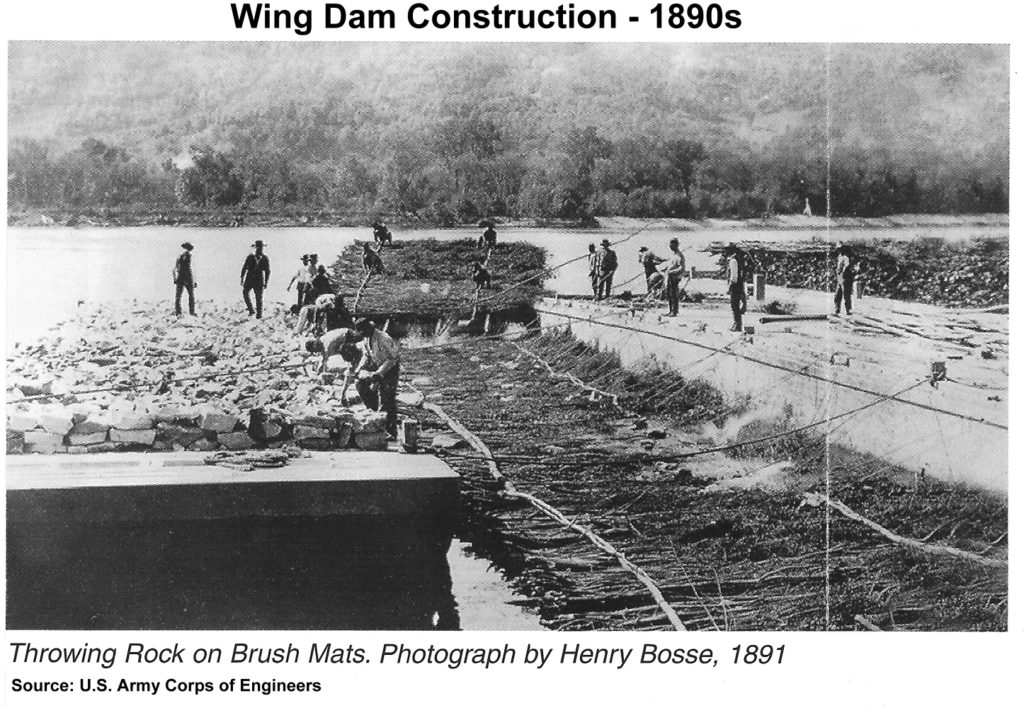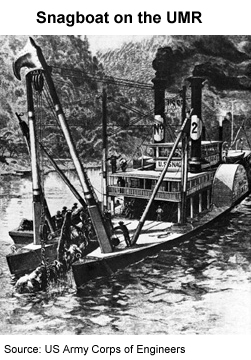The U.S. Corps of Engineers has been responsible for “developing” the Mississippi River Basin’s rivers since the early 1800s when Congress directed them to do surveys and remove snags within the river channel.
Navigation Mission
To improve navigation safety and efficiency by the 1860s the Corps of Engineers was blasting out river rapids at several locations and constructing wing dams or dikes along the river bank to narrow the river channel in order to increase flow speed and water depth. These types of river projects continued into the 1930s and even beyond in some segments of the rivers .

By the 1930s large-scale dam construction on both the Upper Mississippi (UMR) and Missouri Rivers was becoming the primary activity for the Corps of Engineers, though with different objectives on each river. The 26 dams on the UMR, built in the 1940s, are low-head dams built solely for the operation of adjacent locks for navigation. There are also three dams that both generate electricity and have navigation locks.
The six Missouri River dams, started in 1933 and completed in 1964, were built primarily through the Pick-Sloan Program, a Bureau of Reclamation and Corps of Engineers compromise for developing the Missouri River. The dams are located in the upper portion of the Missouri River and were built primarily to store water for hydroelectric power generation, irrigation and recreational uses. The dams do release water to support navigation but the volume of barge traffic is so low on the Missouri River that it is difficult to justify the millions of taxpayer dollars spent each year supporting it.

